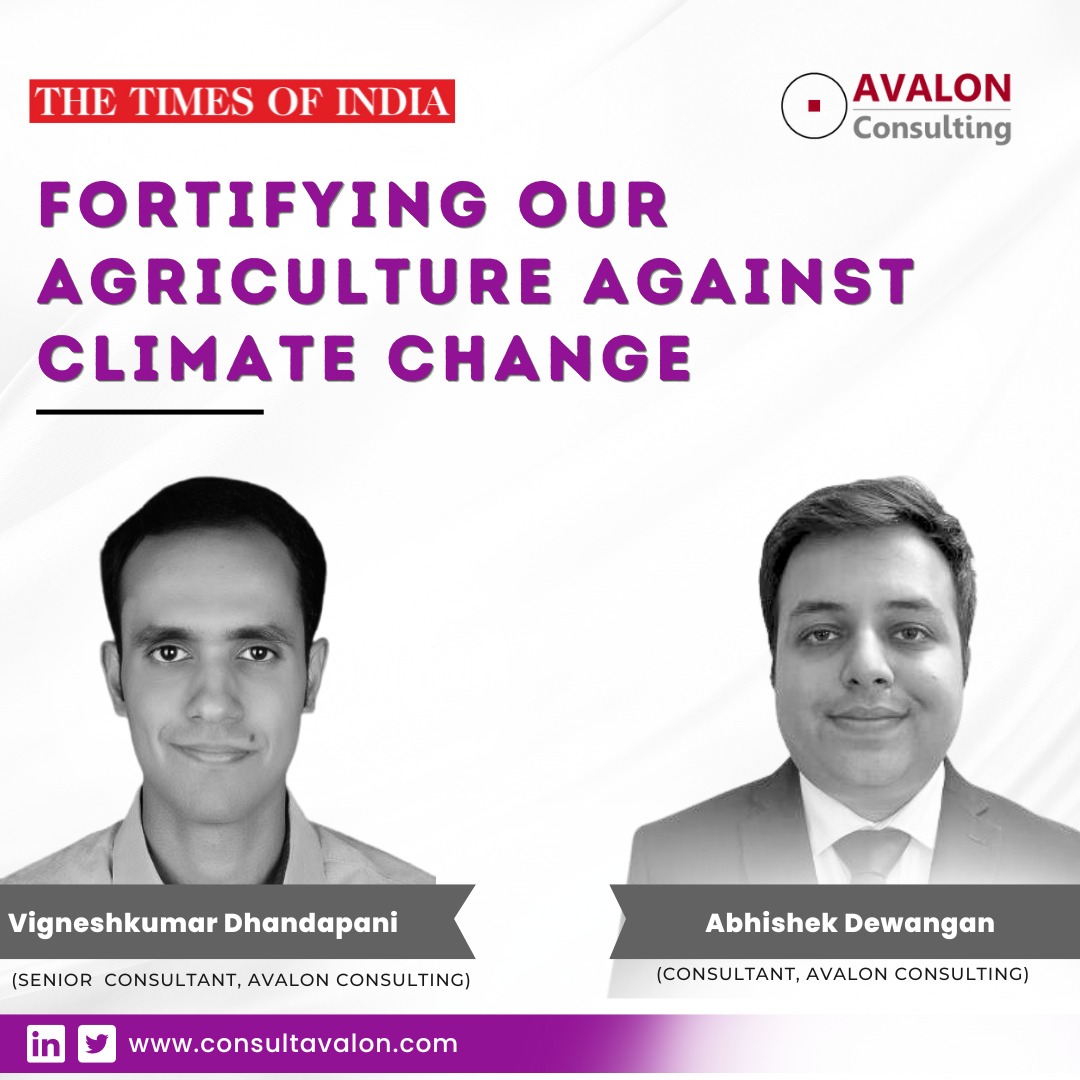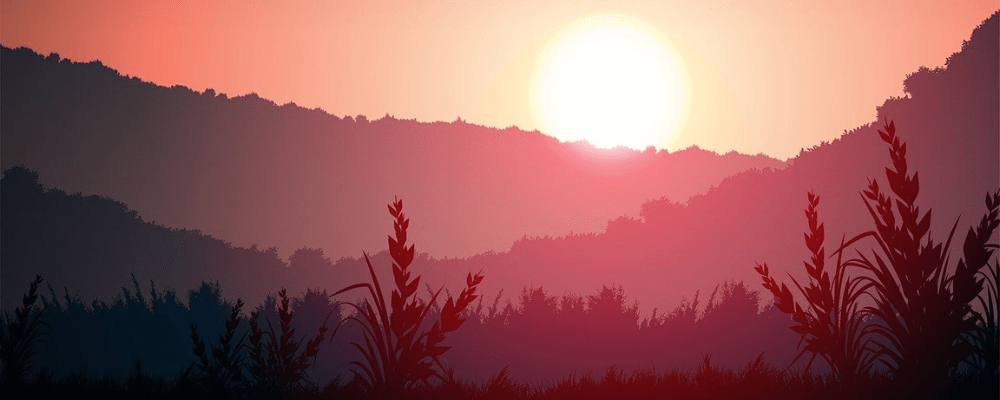The article discusses India’s record-breaking foodgrains production in 2021-22 and the emerging challenges posed by climate change, resulting in extreme weather events. It highlights the impact of such events on the different stages of crop lifecycles – sowing, irrigation, and harvesting. The article also presents possible mitigation measures, including using resilient crop varieties, incorporating millets in the crop mix, adopting precision agriculture techniques, and evaluating future crop distribution.
India witnessed a foodgrains production of ~316 Million-Tonnes in 2021-22 – highest ever for any year. While the news provides optimism to the farmers and government’s food security challenge, another development that has now quietly become mainstream is climate-change, driving extreme events. For instance:
- Between 2017 and 2021, the number of extreme rainfall events (more than 204 mm of rainfall in 24 hours) during South-West Monsoon increased drastically – 29 and 125 respectively
- The number of heatwave days (temperature deviation of +4.5-to-+6 Degrees Celsius from the normal) reported in 2022 for India was 190 against 29 for 2021
- The number of cyclonic storms formed during the period 2011-20 was 33 vis-à-vis 18 during the period 2001-10
The number of such events are expected to increase in the near-to-medium term. Therefore, it is pertinent to understand how such events impact the cropping lifecycles, carrying long-standing implications for the agriculture sector.
The Problem
Any crop goes through 3 stages in its lifecycle:
- Sowing
- Irrigation
- Harvesting
With this context, let us understand how climate change is impacting the cropping lifecycle:
- Sowing Variability
South-west monsoon contributes ~75% of country’s total rainfall. With a normal yearly onset date of June 1, actual rainfall in June over the last 5 years has been erratic. Refer to the table below:
| Year | Total Rainfall in mm. (June 1 – June 30) |
Actual Sowing Area as on July 1 (Lakh Hectares) |
% Change in Sowing Area (Y-O-Y) |
| 2018 | 155.7 | 319.8 | -18% |
| 2019 | 113.5 | 230.1 | -28% |
| 2020 | 195.6 | 433.1 | +88% |
| 2021 | 182.9 | 294.4 | -32% |
| 2022 | 152.3 | 278.7 | -5% |
Sources: a) Business Today article dated July 5, 2022 – “Slow monsoon progress in June hurt Kharif sowing: Here’s why July rains are key” b) Rainfall and Reservoir Data, CMIE
Such drastic variation in rainfall has impacted the kharif sowing progress, causing difficulties in planning, thereby offsetting the timeline for germination and the subsequent stages.
For Rabi crops, sowing has not been yet impacted largely due to the roll-over of the south-west monsoon into October, but its delayed withdrawals over the last few years mean delayed kharif harvesting and thereby causing stress among the farmers towards land preparation for the Rabi season.
- Irrigation at the extremes
The south-west monsoon (2022) witnessed an overall rainfall of 925 mm – 6% above normal. However, a closer look at the distribution reveals that Uttar Pradesh recorded ~30% rainfall deficit, while Maharashtra recorded excess rainfall during the season. Such patterns of rainfall have become prevalent, leading to either water accumulation in the fields causing inundation or lack of water hampering the transpiration process, thereby affecting the standing kharif crops.
On the other hand, the actual reservoir levels data – important for Rabi crops irrigation – taken post-monsoon over the last 5 years is striking:
| Month | Number of Dams | Storage (Billion Cubic Metres) |
| Nov-18 | 91 | 98.4 |
| Nov-19 | 120 | 147 |
| Nov-20 | 128 | 139.3 |
| Nov-21 | 130 | 136.4 |
| Nov-22 | 143 | 149.5 |
Source: Rainfall and Reservoir Data, CMIE
While the number of dams, compared to 2019, have increased by ~20% till 2022, the actual reservoir levels in the post-monsoon period has decreased in the 2 years following 2019 and a negligible increase seen in 2022. As the skewed distribution of south-west monsoon rains becomes pronounced due to climate-change, the distribution of water levels across dams would also vary considerably and lead to local or regional level water supply crises. Such crises coupled with increase in rabi sowing area will potentially exacerbate the lifecycle of the standing crops – a challenge brewing for the long term.
- Harvesting stage loss
For the last 5 years, the south-west monsoon has been associated with delayed withdrawal commencement, with 22 days of delay happening in 2019. This has led to excessive rainfalls in October- the kharif harvesting month – causing pest attacks and crop diseases associated with waterlogging, notwithstanding the dislodging of the crops itself.
On the other end, there have been heatwaves during the Rabi harvesting season. For example, India’s total wheat production in 2021-22 was ~4.6% lower y-o-y because of a series of heatwaves that occurred during the period March-April in 2022.
Going forward too, it would be realistic to expect climate-change driven events across cropping lifecycles, which therefore means a holistic set of measures need to be taken to mitigate these challenges.
Possible Mitigation Measures
- Use resilient crop varieties
ICAR, the government institute that focuses on crop research, has been active in releasing different resilient varieties of crops depending on the state-level or regional-level context. ~30 rice varieties have been released between 2017 and 2021. Many of these varieties are tolerant to extreme events. However, awareness regarding such varieties among the farmers has been a concern. To push the usage of resilient crop varieties downstream, it is pertinent that both government and private seed manufacturers pursue aggressive marketing campaigns, conduct on-field demonstrations, strengthen the distribution network, and add other channels for sales (like e-commerce).
- Add millets to the crop mix
Millets’ share of the Indian foodgrain basket was ~20% in the mid-1960s, whose share today has fallen to ~6%. Millets are conducive to growth under semi-arid and arid conditions, require less water and carry holistic health benefits. With such advantages, some measures that can help increase penetration of millets are input cost subsidies to the farmers growing them, their increased procurement by government agencies, their enhanced share in the public distribution schemes and mass consumer awareness campaigns regarding their consumption.
- Use precision agriculture techniques
During the last 50 years, the use of fertilizers increased eightfold, resulting in rich harvests. However, applying massive amounts of fertilizers has led to soil degradation, water pollution and accumulation of greenhouse gases. This is where precision agriculture practices like Variable Rate Application, Smart Irrigation, Historical Field Data Analysis, etc. may help lower CO2 emissions, and save soil and water biodiversity. Also, such practices increase the yields – at a 15-25% adoption rate by farmers, the overall yields can increase by 10-15%.
- Evaluate future crop distribution
As per a NASA study, by 2030, due to climate-change, wheat yields may increase globally with temperate climate extending into the US and Canada, making such regions favourable for wheat growth. Similar studies can be carried out by a collaboration of government institutions such as ICAR and IMD, for the Indian context. This can aid the farm ecosystem to begin transition towards the future cropping needs, thereby proofing the Indian agriculture sector from “climate-shocks”.
These interventions guided with best farming practices can have a tremendous impact on the agriculture sector, thereby having a trickle-down effect on the rural economy. Securing our farmers’ future would be securing the nation’s future too!
The post Fortifying our Agriculture against Climate Change appeared first on Avalon Consulting.
“Avalon Consulting was set up in 1989 and has grown to become one of Asia’s top-ranked consulting firms; the only Indian firm to achieve this recognition.
Please visit the firm link to site



